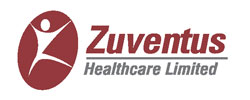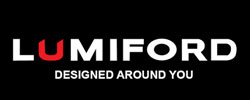The BIS (Conformity Assessment) Regulations, 2018, Scheme-II, governs the CRS (Compulsory Registration
Scheme). Introduced by the Ministry of Electronics & Information Technology (MeitY) in 2012, the CRS
Scheme mandates that manufacturers obtain a BIS CRS Certificate for their electronic products before
releasing them into the market. This scheme is based on the principle of self-declaration of conformity
by manufacturers, and in recent years, there has been a significant rise in the number of permits issued
under the Compulsory Registration Scheme (CRS).
Furthermore, in October 2012, the Electronics & Information Technology Goods (Requirement of Compulsory
Registration) Order, 2021, covering 15 categories of electronic devices and components, was officially
notified by the Ministry of Electronics and Information Technology. In November 2014, MeitY added 15
additional electronic product categories. In October 2016, the Indian Standard for Indian Language
Support for Mobile Phones was introduced by the Ministry.
The Ministry also expanded the directive in August 2017 to include 13 more categories of electronic
products. In September 2017, the Ministry of New and Renewable Energy amended the Solar Photovoltaics,
Systems, Devices & Components Goods (Requirements for Compulsory Registration) Order, 2017, adding five
new products.
In compliance with this directive, no individual may manufacture, store for sale, import, or distribute
any products that do not adhere to the Indian Standards set by the Bureau of Indian Standards (BIS Act)
and do not carry the Standard Mark.
What is BIS Certification for India?
Manufacturers aiming to export certain products to India must obtain BIS registration (CRS) for
electronics or BIS certification (ISI) under the Foreign Manufacturers Certification Scheme (FMCS).
These certifications are essential for introducing and selling products in the Indian market. The Bureau
of Indian Standards (BIS) grants BIS Certification or Registration with a unique registration number to
ensure that products meet Indian Standards (IS) in terms of safety, reliability, and quality.
Understanding CRS
The Compulsory Registration Scheme (CRS) was initially introduced by the Ministry of Electronics and
Information Technology to regulate electronic and IT products. Currently, the scheme covers 76 product
categories. Any individual or company involved in manufacturing, importing, storing, selling, or
distributing goods listed under the CRS product categories must obtain BIS CRS Registration. This
process requires manufacturers to have their products tested in BIS-approved laboratories.
Once the products meet the required standards, companies can declare their compliance, and BIS grants
them CRS Registration. Upon successful registration, companies are authorized to use the Standard Mark
on their products, confirming their adherence to Indian Standards.
List of Products Covered under the Compulsory Registration Scheme
The Compulsory Registration Scheme (CRS) includes a diverse range of products. As of now, the list
encompasses 76 product categories, primarily focused on electronic and IT goods. This includes, but is
not limited to:
| Sl No. |
Product |
Indian Standard Number (IS No.) |
| 1 |
Mobile Phones |
IS 13252 (Part 1) |
| 2 |
Televisions (LED, LCD, OLED) |
IS 16102 (Part 1) |
| 3 |
Laptops and Computers |
IS 13252 (Part 1) |
| 4 |
Adapters and Chargers |
IS 13252 (Part 1) |
| 5 |
Printers |
IS 13252 (Part 1) |
| 6 |
Scanners |
IS 13252 (Part 1) |
| 7 |
Solar Photovoltaic Modules |
IS 14286 |
| 8 |
Solar Inverters |
IS 16221 (Part 1) |
| 9 |
UPS Systems |
IS 16242 |
| 10 |
Refrigerators |
IS 1476 |
| 11 |
Air Conditioners |
IS 1391 |
| 12 |
Washing Machines |
IS 302 (Part 2/Sec 7) |
| 13 |
Microwaves |
IS 302 (Part 2/Sec 25) |
| 14 |
Electric Fans |
IS 374 |
| 15 |
Electric Water Heaters |
IS 2082 |
| 16 |
Electric Cookers |
IS 302 (Part 2/Sec 16) |
| 17 |
Electrical Cables |
IS 694 |
| 18 |
Wires |
IS 8130 |
| 19 |
LED Lamps |
IS 16102 (Part 2) |
| 20 |
Batteries |
IS 16046 |
| 21 |
Electric Irons |
IS 302 (Part 2/Sec 3) |
| 22 |
Electric Stoves |
IS 302 (Part 2/Sec 8) |
| 23 |
Electric Heaters |
IS 302 (Part 2/Sec 30) |
| 24 |
Electrical Switches |
IS 3854 |
| 25 |
Electrical Socket Outlets |
IS 1293 |
| 26 |
Plug Tops |
IS 1293 |
| 27 |
Inverters |
IS 16221 (Part 2) |
| 28 |
Electric Kettles |
IS 302 (Part 2/Sec 15) |
| 29 |
Induction Cooktops |
IS 302 (Part 2/Sec 19) |
| 30 |
Toasters |
IS 302 (Part 2/Sec 9) |
| 31 |
Coffee Makers |
IS 302 (Part 2/Sec 29) |
| 32 |
Blenders |
IS 302 (Part 2/Sec 16) |
| 33 |
Food Processors |
IS 302 (Part 2/Sec 23) |
| 34 |
Chimneys |
IS 302 (Part 2/Sec 11) |
| 35 |
Electric Roasters |
IS 302 (Part 2/Sec 24) |
| 36 |
Electric Hand Dryers |
IS 302 (Part 2/Sec 27) |
| 37 |
Electric Showers |
IS 302 (Part 2/Sec 21) |
| 38 |
Electric Toothbrushes |
IS 302 (Part 2/Sec 18) |
| 39 |
Electric Hair Dryers |
IS 302 (Part 2/Sec 19) |
| 40 |
Electric Hair Straighteners |
IS 302 (Part 2/Sec 30) |
| 41 |
Electric Curling Irons |
IS 302 (Part 2/Sec 30) |
| 42 |
Electric Shavers |
IS 302 (Part 2/Sec 24) |
| 43 |
Electric Massagers |
IS 302 (Part 2/Sec 28) |
| 44 |
Electric Razors |
IS 302 (Part 2/Sec 30) |
| 45 |
Electric Foot Warmers |
IS 302 (Part 2/Sec 23) |
| 46 |
Electric Blankets |
IS 302 (Part 2/Sec 17) |
| 47 |
Electric Water Purifiers |
IS 1475 |
| 48 |
Electric Juicers |
IS 302 (Part 2/Sec 21) |
| 49 |
Electric Rice Cookers |
IS 302 (Part 2/Sec 23) |
| 50 |
Electric Fryers |
IS 302 (Part 2/Sec 27) |
| 51 |
Electric Sandwich Makers |
IS 302 (Part 2/Sec 27) |
| 52 |
Electric Choppers |
IS 302 (Part 2/Sec 23) |
| 53 |
Electric Grills |
IS 302 (Part 2/Sec 24) |
| 54 |
Electric Hot Plates |
IS 302 (Part 2/Sec 25) |
| 55 |
Electric Pressure Cookers |
IS 302 (Part 2/Sec 27) |
| 56 |
Electric Steamers |
IS 302 (Part 2/Sec 27) |
| 57 |
Electric Soup Makers |
IS 302 (Part 2/Sec 23) |
| 58 |
Electric Food Warmer |
IS 302 (Part 2/Sec 23) |
| 59 |
Electric Ice Cream Makers |
IS 302 (Part 2/Sec 28) |
| 60 |
Electric Milk Frothers |
IS 302 (Part 2/Sec 27) |
| 61 |
Electric Egg Cookers |
IS 302 (Part 2/Sec 24)
|
| 62 |
Electric Slow Cookers |
IS 302 (Part 2/Sec 23) |
| 63 |
Electric Popcorn Makers |
IS 302 (Part 2/Sec 28) |
| 64 |
Electric Chocolate Fondue |
IS 302 (Part 2/Sec 28) |
| 65 |
Electric Pizza Makers |
IS 302 (Part 2/Sec 28) |
| 66 |
Electric Waffle Makers |
IS 302 (Part 2/Sec 28) |
| 67 |
Electric Crepe Makers |
IS 302 (Part 2/Sec 28) |
| 68 |
Electric Cookie Makers |
IS 302 (Part 2/Sec 28) |
| 69 |
Electric Candy Floss Makers |
IS 302 (Part 2/Sec 28) |
| 70 |
Electric Cotton Candy Makers |
IS 302 (Part 2/Sec 28) |
| 71 |
Electric Food Dehydrators |
IS 302 (Part 2/Sec 28) |
| 72 |
Electric Can Openers |
IS 302 (Part 2/Sec 27) |
| 73 |
Electric Manual Mixers |
IS 302 (Part 2/Sec 23) |
| 74 |
Electric Butter Churners |
IS 302 (Part 2/Sec 23) |
| 75 |
Electric Grinders |
IS 302 (Part 2/Sec 27) |
| 76 |
Electric Yogurt Makers |
IS 302 (Part 2/Sec 28) |
Who Can Apply for BIS CRS Registration?
The BIS CRS scheme is designed for IT and electronic products, necessitating BIS registration for
individuals or companies involved in the manufacture of electronic goods. To obtain registration, the
product must be tested at a BIS-recognized laboratory. BIS grants the registration under the CRS scheme.
Different Forms Required for BIS CRS Registration
| Form-I |
Application for grant of new license |
| Form-II |
Format for the undertaking of test reports |
| Form-III |
Format for affidavit |
| Form-IV |
Format for letter of nomination of AIR (Authorised Indian Representative) |
| Form-VI |
Application for Renewal of License |
| Form-VIII A |
Inclusion or Model Withdrawal |
| Form-VIII B |
Changes of other details in the scope of the license |
Documents Required for BIS CRS Registration
For BIS CRS Registration, manufacturers need to provide the following documents:
 Application
Form
(Form VI)
Application
Form
(Form VI) Business
License
Business
License
 Manufacturing
Address
Proof
Manufacturing
Address
Proof Test Reports
Test Reports
 Authorization
Letter
Authorization
Letter
 Technical
Documentation
Technical
Documentation Brand Name
Declaration
Brand Name
Declaration Affidavit and
Undertaking
Affidavit and
Undertaking
Procedure for BIS CRS Registration
The procedure for BIS CRS Registration involves several steps to ensure that products comply with
Indian
Standards. Here's a step-by-step guide:
 The first step
is
to
get your product's ISI number.
The first step
is
to
get your product's ISI number. Product
testing
at a
BIS-recognized lab.
Product
testing
at a
BIS-recognized lab. Preparation of
necessary documents, including test reports.
Preparation of
necessary documents, including test reports. Submission of
the
application and documents to BIS through the online portal.
Submission of
the
application and documents to BIS through the online portal. Evaluation of
the
application and documents by BIS.
Evaluation of
the
application and documents by BIS. Grant of CRS
Registration with a unique registration number.
Grant of CRS
Registration with a unique registration number. Post-registration
compliance, including possible audits or surveillance by BIS.
Post-registration
compliance, including possible audits or surveillance by BIS.
Validity of BIS CRS Registration
The BIS CRS Registration is valid for two years, after which it may be extended if the product and the
standard remain the same.
Guidelines for E-Labelling under the BIS CRS Registration Scheme
- When selling, distributing, importing, or storing devices with e-labels, the product packaging
must include a physical label.
- For bulk-packaged devices, a detachable adhesive label on the box is sufficient.
- The responsible party must ensure that the compliance information is securely programmed and
cannot be altered by unauthorized parties. This information must be easily accessible and
unchangeable from the program menu.
- Any mandatory regulatory information that needs to be included on the product package or user
manual must also be provided electronically, following the relevant regulations.
- E-labelled products must allow access to the e-label without requiring additional plug-ins or
tools.
- Users should be able to view the information without special authorization or access codes. It
must be accessible within four steps in the device's menu.
- If the main user manual or guide is provided electronically, the e-label can include this
information.
- The product website may offer guidance on accessing the information. The product packaging or
user manual must include details on how to reach the website.
- Instructions on how to obtain BIS certification must be clearly provided. These instructions
should be included in the operating manual, user handbook, or insert with the product.
- The e-display of the Standard Mark must comply with all BIS requirements.
Frequently Asked Questions
1.What is BIS CRS Registration?

BIS CRS Registration is a certification required for certain electronic and IT products to ensure
they comply with Indian safety standards. This registration is mandated by the Bureau of Indian
Standards (BIS) for products sold in the Indian market.
2.Who needs to obtain BIS CRS Registration?

Manufacturers, importers, and distributors of specific electronic and IT products need to obtain
BIS CRS Registration. This applies to anyone involved in producing or selling these products
within India.
3.How do I apply for BIS CRS Registration?

To apply, you must submit an application to BIS, have your product tested at a BIS-recognized
laboratory, and meet all necessary compliance requirements. The registration is granted once
your product meets the standards.
4.What documents are required for BIS CRS Registration?

Required documents typically include a completed application form, product details, manufacturing
details, test reports from BIS-approved laboratories, and proof of compliance with Indian
standards.
5.How long does it take to get BIS CRS Registration?

The time required for BIS CRS Registration varies depending on the product and the completeness
of the application. Generally, it involves several weeks for testing and processing.
6.Can a product be sold in India without BIS CRS Registration?

No, selling products that fall under the BIS CRS scheme without proper registration is not
allowed. Products must be registered and comply with BIS standards before they can be marketed
in India.









